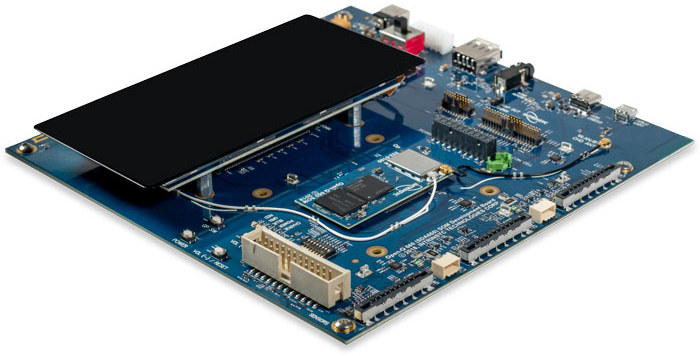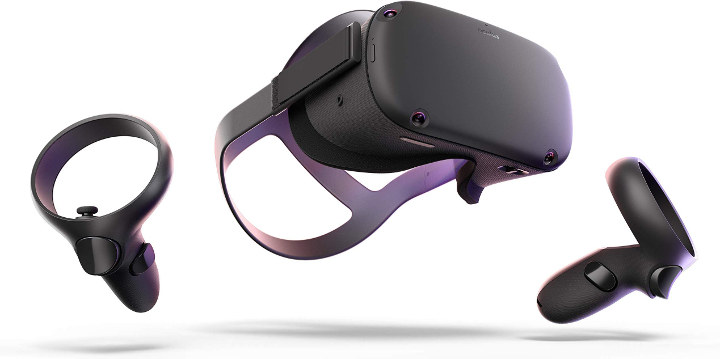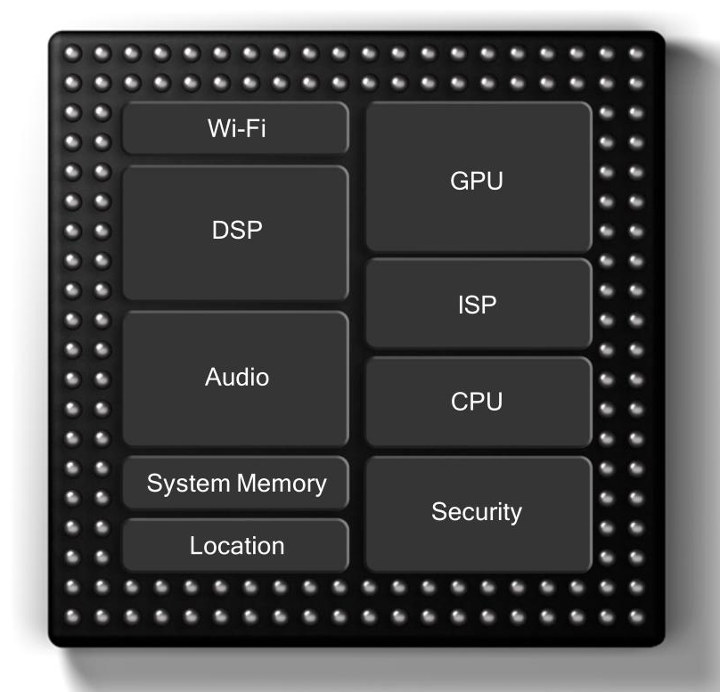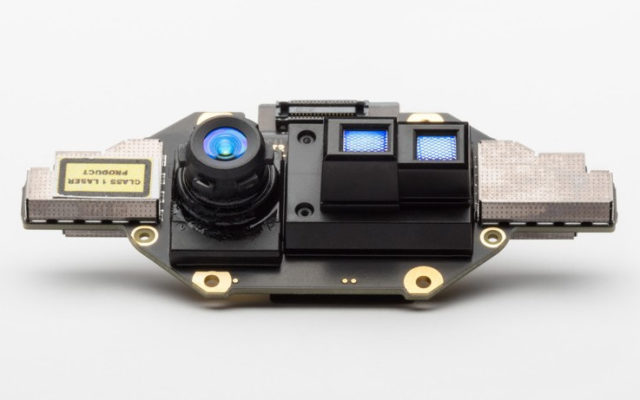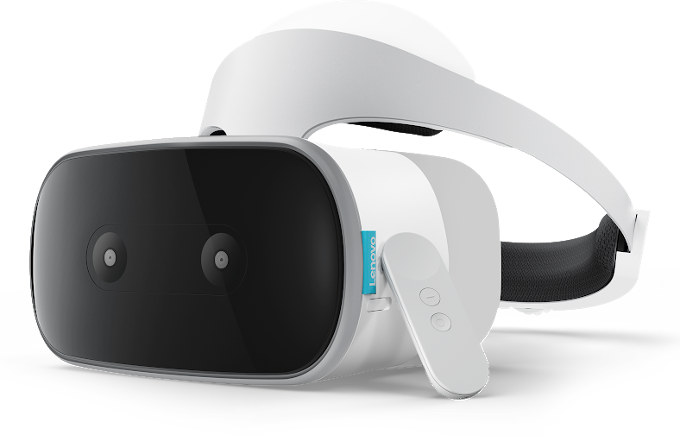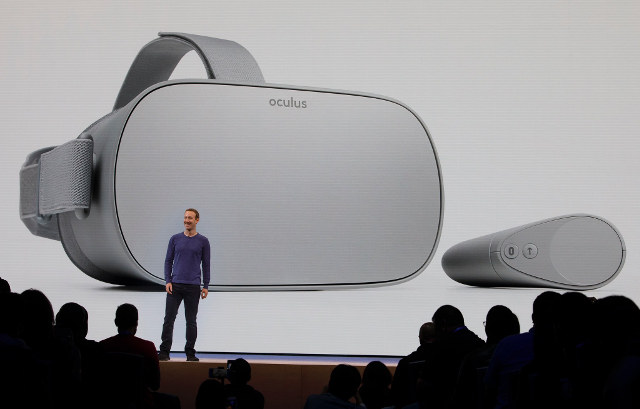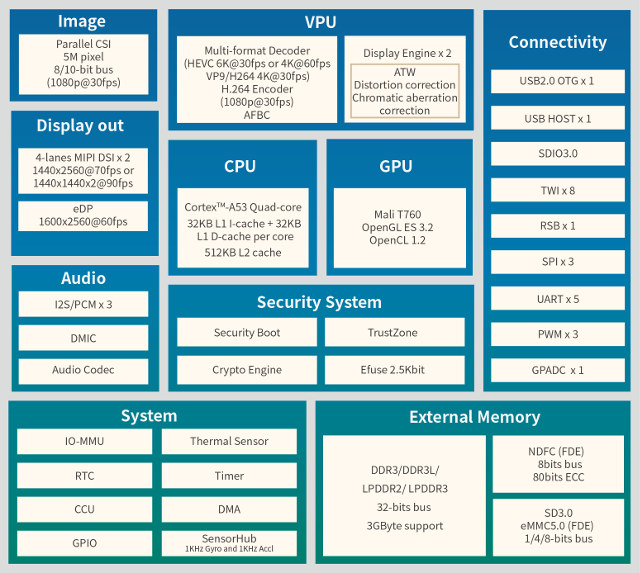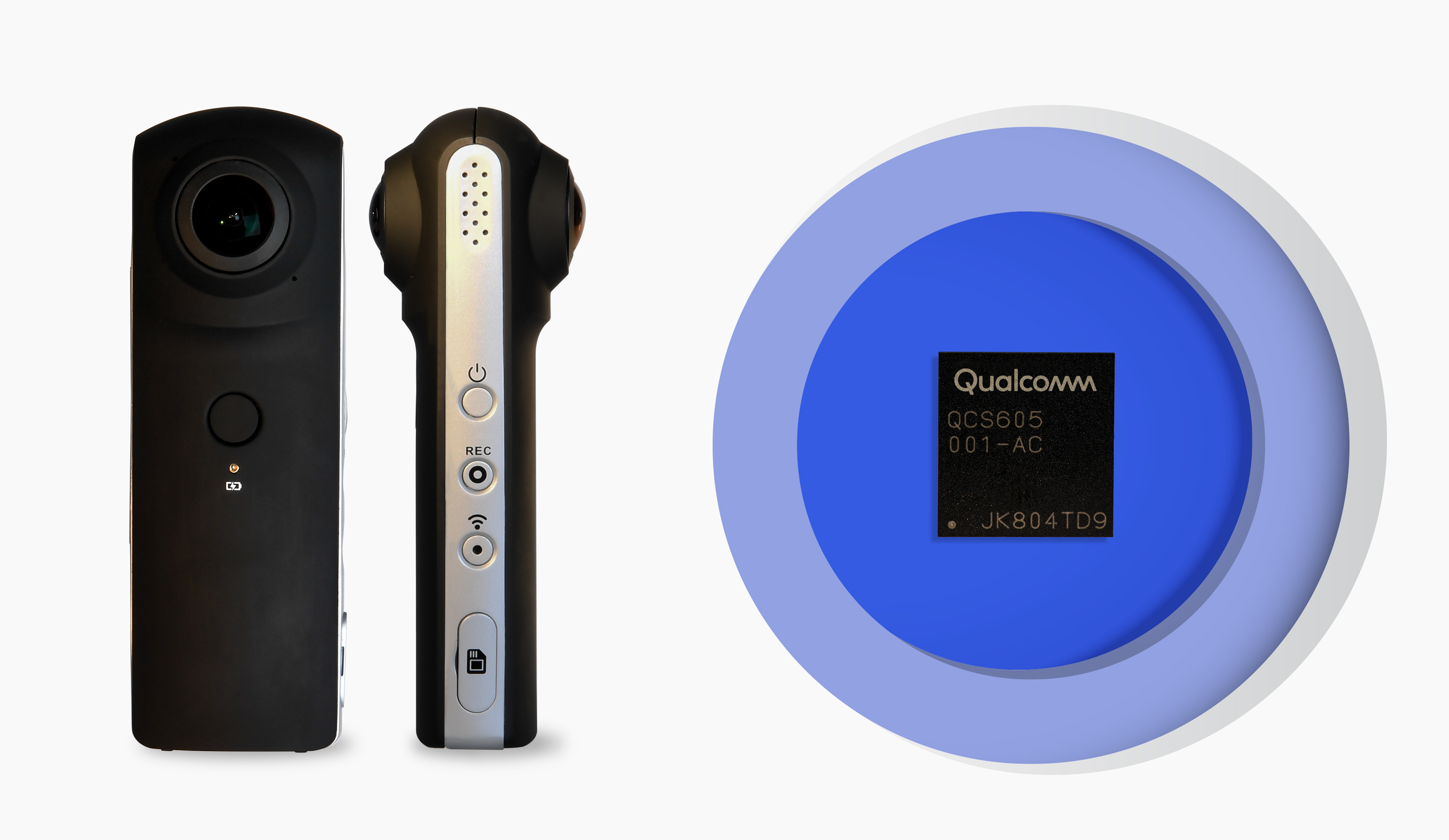Intrinsyc introduced the first Qualcomm Snapdragon 845 hardware development platform last year with its Open-Q 845 HDK designed for OEMs and device makers. But the company has now just announced a solution for embedded systems and Internet of Things (IoT) products with Open-Q 845 micro system-on-module (µSOM) powered by the Snapdragon 845 octa-core processor, as well as a complete development kit featuring the module and a Mini-ITX baseboard. Open-Q845 µSOM Specifications: SoC – Qualcomm Snapdragon SDA845 octa-core processor with 4x Kryo 385 Gold cores @ 2.649GHz + 4x Kryo 385 Silver low-power cores @ 1.766GHz cores, Hexagon 685 DSP, Adreno 630 GPU with OpenGL ES 3.2 + AEP (Android Extension Pack), DX next, Vulkan 2, OpenCL 2.0 full profile System Memory – 4GB or 6GB dual-channel high-speed LPDDR4X SDRAM at 1866MHz Storage – 32GB or 64GB UFS Flash Storage Connectivity Wi-Fi 5 802.11a/b/g/n/ac 2.4/5Ghz 2×2 MU-MIMO (WCN3990) with 5 GHz […]
Facebook Oculus Quest Standalone VR Headset Launched for $399 and up
One year ago, Facebook introduced their very first standalone virtual reality headset with Oculus Go. At $199 the price was fairly attractive, but the headset only supported 3DOF motion tracking. The company announced a new model at F8 2019. Oculus Quest is equipped with a more powerful Snapdragon 835 processor, two 1600 x 1440 displays, and support for 6DOF (degrees of freedom) virtual reality thanks to two handheld motion controllers. Oculus Quest specifications: SoC – Qualcomm Snapdragon 835 octa-core processor with 4x high performance Kryo 280 cores @ 2.20 GHz/ 2.30 GHz (single core operation), 4x low power Kryo 280 cores @ 1.9 GHz, Adreno 540 GPU System Memory – 4GB RAM Storage – 64GB or 128GB flash storage Display – 2x 1600×1440 OLED displays up to 72 Hz Camera – 4x wide-angle tracking cameras for inside-out position tracking Audio – Integrated speakers, 2x 3.5mm audio jacks Battery – Lithium-Ion […]
Qualcomm Snapdragon XR1 is a Dedicated eXtended reality (XR) platform For XR / VR Headset
Qualcomm has unveiled its first Snapdragon XR platform specifically designed for extended / augmented / virtual reality headsets during a launch event leading up to the Augmented World Expo (AWE). Snapdragon XR1 features the usual Arm based Kryo cores, Adreno GPU, Hexagon DSP, ISP, and so on, but for whatever reason, the company did not disclose details specifications about the platform / SoC. XR1 also provides Qualcomm AI Engine for on-device processing, as well as an advanced XR software service layer, machine learning, the Snapdragon XR Software Development Kit (SDK) and Qualcomm Technologies connectivity and security technologies. Advanced vision processing capabilities of the SoC enabled technologies such as Visual Inertial Odometry (VIO) The XR1 platform will be for higher headsets with 3 to 6 degrees of freedom (3DoF, 6DoF), support ultra high-definition 4K video resolution at up to 60 frames per second, and offer reduced unwanted noise using its Spectra […]
Microsoft Introduces Project Kinect for Azure
Kinect started as as motion sensing input device for Xbox 360 & One game consoles with an integrated webcam, infrared projector, and a microphone array, which enabled it to detect depth, motion, and voice from gamers. But it also become popular with maker projects due to price and capabilities, and was even found to be a worthy microphone array for voice commands. The third generation of Kinect went into Hololense mixed reality headset, and Microsoft has just unveiled the fourth generation Kinect with Project Kinect for Azure. AFAIK, the company did not provide the full technical details about the new Kinect, but we know it comes with an RGB camera, a 360-degree mic array, an accelerometer, and a time-of-flight (ToF) depth-sensor, and the company did offer some details about the latter : Number of pixels: 1024×1024 resolution Highest Figure of Merit (highest modulation frequency and modulation contrast resulting in low […]
Lenovo Introduces Mirage Solo Daydream Standalone Virtual Reality Headset & Mirage Camera for VR180 Video Recording
Standalone / All-in-One Android virtual reality headsets have been around for a couple of years, mostly from Chinese vendors. But the number and quality of VR apps available were rather low at the time, and those VR headsets were mostly useful to watch 360° & VR videos. This may explain why larger companies had not launched any standalone headset so far, but this week everything changed, as Facebook started selling their Oculus Go virtual reality headset , and Google & Lenovo have just jointly announced the availability of Mirage Solo, the first standalone VR headset compatible with Google Daydream. Lenovo Mirage Solo specifications: SoC- Qualcomm Snapdragon 835 VR processor System Memory – 4 GB RAM Storage – 64 GB UFS flash, microSD Card slot up to 256 GB Display – 5.5″ QHD (2560 x 1440) LCD display @ 75 Hz Lenses – 2 x Fresnel-Aspheric 110° FOV Camera – Dual […]
Facebook Oculus Go Standalone VR Headset Launched for $199 and Up
Oculus has developed virtual reality headset for several years, starting with VR development kits, before launching consumer VR headsets working with either a powerful computer (Oculus Rift), or a smartphone (Oculus Gear VR). But the company – now part of Facebook – has more recently been working on an all-in-one virtual reality headset called Oculus Go that works without external hardware, and launched it today starting at $199.00. Oculus Go specifications: SoC – Qualcomm Snapdragon 821 octa-core Mobile VR Platform System Memory – Storage – 32 or 64GB storage Display – 5.5″ display with 2560 x 1440 resolution; 538ppi; up to 72 Hz refresh rate Fresnel lenses Audio – Built-in spatial audio and integrated microphone Battery – Lithium-Ion battery good for about two hours for games to up to 2.5 hours for streaming media and video. Dimensions – 190mm x 105mm x 115mm Weight – 468 grams The company explains […]
Allwinner VR9 SoC is Specifically Designed for Extended/Virtual Reality Headsets
Virtual reality headsets have been powered by application processors designed for smartphones, tablets, or even TV boxes. For example last year, I reviewed a low cost VR headset good enough to watch 360 / VR videos, but not gaming that was based on Allwinner H8 TV box processor. But we’ve previously seen Allwinner was working on VR9 & VR10 processors specifically designed for virtual reality headsets with launches scheduled for Q4 2016 and Q2 2017. There’s obviously been some delays, but the company also now formally launched Allwinner VR9 quad core Cortex A53 processor specifically designed for XR and VR headset (Extended / Virtual reality). Allwinner VR9 key features & specifications with parts that look specific to XR/VR highlighted in bold: CPU – Quad-Core Arm CortexM-A53 @ 1.8GHz with 32KB L1 I-cache + 32KB L1 D-cache per core, 512KB L2 cache, CoolFlex power management architecture GPU – Arm Mali-T760 @ […]
Qualcomm QCS603/QCS605 “IoT” SoCs are Designed for AI and Computer Vision Applications
Qualcomm has unveiled the “Qualcomm Vision Intelligence Platform”, which aims at IoT devices with cameras leveraging artificial intelligence and computer vision. The first SoCs part of the platform are QCS605 and QCS603 manufactured with a 10nm process and equipped with an “advanced image signal processor” and the Qualcomm Artificial Intelligence (AI) Engine, as well Arm CPU cluster, Adreno GPU, and Hexagon DSP. QCS603 & QCS605 specifications: CPU QCS603 – 2x 1.6GHz Qualcomm Kryo 300 Gold cores, 2x 1.7GHz Qualcomm Kryo 300 Silver cores QCS605 – 2x 2.5GHz Qualcomm Kryo 300 Gold cores, 6x 1.7GHz Qualcomm Kryo 300 Silver cores Qualcomm Artificial Intelligence Engine DSP Qualcomm Hexagon 685 Vector Processor 2x Qualcomm Hexagon Vector eXtensions (HVX) GPU – Qualcomm Adreno 615 with OpenGL ES 3.2, Vulkan, OpenCL support Neural Processing – Qualcomm Snapdragon Neural Processing Engine programming interface with support for Tensorflow, Caffe/Caffe2, ONNE, Android NN; 2.1 TOPS @ 1w Memory […]


